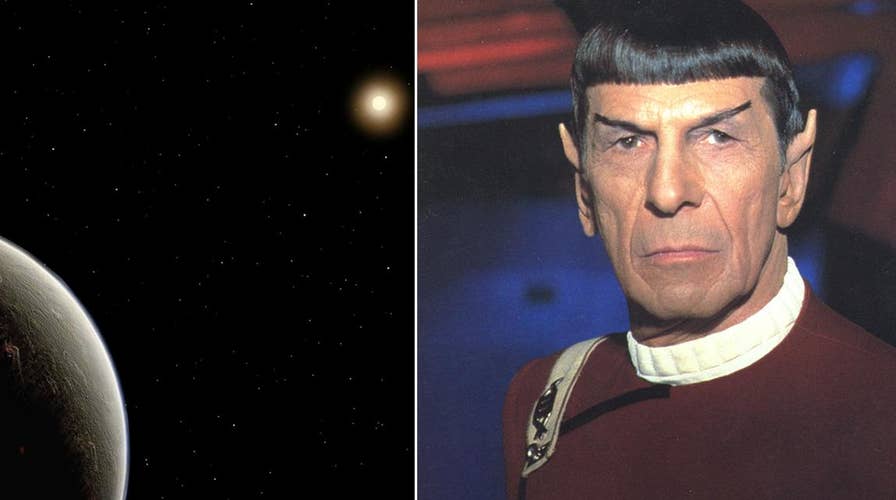Scientists discover real-life ‘Planet Vulcan’
Scientist from the University of Florida have discovered a real life ‘Planet Vulcan’ just 16 light years away from planet Earth.
If it has inhabitants, it's a good bet they all "live long and prosper."
The real-life planet Vulcan, once home to "Star Trek's" Spock (made famous by Leonard Nimoy), has been found, thanks to scientists who've discovered an exoplanet just 16 light-years from Earth.
The planet is associated with the real-life star 40 Eridani A, which has been found to be host to one planet. It is roughly twice the size of Earth (earning it the moniker of a "Super Earth) and orbits its star every 42 days, said astronomer Jian Ge, who led the study.
CASSINI'S LAST VIEW OF SATURN MOON SHOWS FABULOUS METHANE LAKES
“Vulcan was connected to 40 Eridani A in the publications 'Star Trek 2' by James Blish (Bantam, 1968) and 'Star Trek Maps' by Jeff Maynard (Bantam, 1980),” explained astronomer George Henry in the statement.
Given the fact 40 Eridani A is slightly cooler and less massive than our Sun and has a 10.1-year magnetic cycle (compared to 11.6 for our Sun), it could be an "ideal host star" for an advanced civilization, astronomer Matthew Muterspaugh noted.
“The new planet is a ‘super-Earth’ orbiting the star HD 26965, which is only 16 light years from Earth, making it the closest super-Earth orbiting another Sun-like star,” said Ge in a statement. “The planet is roughly twice the size of Earth and orbits its star with a 42-day period just inside the star’s optimal habitable zone.”
The 40 Eridani star system is comprised of three stars, with Vulcan orbiting the "primary" star and the two others are companion stars, which, according to a 1991 letter by Star Trek creator Gene Roddenberry and several Harvard astrophysicists, “would gleam brilliantly in the Vulcan sky."
PLUTO SHOULD BE A PLANET AGAIN, RESEARCHERS ARGUE
40 Eridani A, also known as HD 26965, was discovered using the Dharma Endowment Foundation Telescope (DEFT) and is the first “super-Earth” found by the Dharma Survey, the researchers noted.
"This star can be seen with the naked eye, unlike the host stars of most of the known planets discovered to date," said University of Florida astronomer and lead author of the study Bo Ma, in a statement. "Now, anyone can see 40 Eridani A on a clear night and be proud to point out Spock's home."
Follow Chris Ciaccia on Twitter @Chris_Ciaccia

